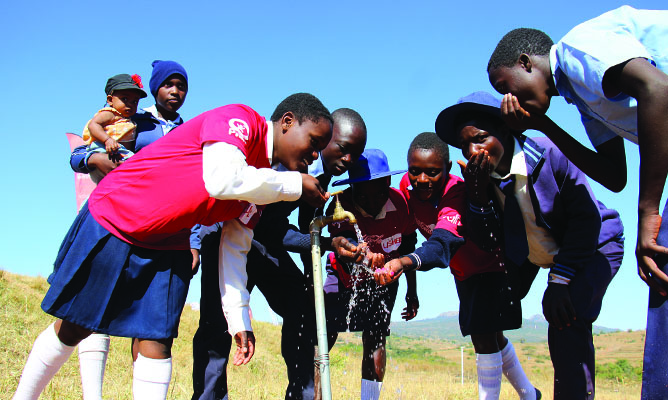
JANE Musekiwa and her husband, Ernest Chamanga, have been farming at Chitora I irrigation scheme since 1994. In that year, the government asked families in the area to come to the newly established irrigated site. Jane and Ernest decided to take the plunge.
BY MARY NORRIS
Each of the 68 families at Chitora 1 scheme was allotted a little over an acre of irrigated land. While the work is hard, Jane and Ernest are luckier than many of their rural neighbours who have to rely on rain-fed agriculture, or lug water, often long distances, to water their plots.
Like most smallholder farmers on Zimbabwe’s irrigation schemes, Jane grows high-value crops, mostly vegetables. This year, thanks to support from the United States Agency for International Development (USAID), she was able to receive a small loan for seeds and fertilisers and is now cultivating green beans, carrots, maize, and peas.
In deciding what to grow, she considers a variety of factors such as soil fertility, market demand, and past experience. Last year their carrots did very well, while yields from the groundnuts they planted were low. They also listen to the advice of buyers at Mbare market to help determine what to plant.
A slim, long-limbed woman of 41 years, Jane works every day in her fields, except for Sunday when she and her family go to church and rest.
Labour is always an issue, especially when school is in session for then she has to do without the help of her children.
“We often work the whole day in the fields and even prepare our food here,” says Jane smiling broadly. During periods of peak activity, Jane and Ernest hire workers, usually nearby farmers that are not on the irrigation scheme. Finding help is easier this year, as many farmers’ crops in the region have suffered from poor rainfall.
- Chamisa under fire over US$120K donation
- Mavhunga puts DeMbare into Chibuku quarterfinals
- Pension funds bet on Cabora Bassa oilfields
- Councils defy govt fire tender directive
Keep Reading
Usually the Mutoko region receives adequate rain, but this year the rains came late and ended too soon. When asked if men and women perform different tasks on the farm, she smiles again: “No. Men and women do the same tasks. I can plough too.
Husbands and wives help each other so they can achieve more.”
Indeed, in looking out at the green patchwork of plots that make up Chitora, we see both men and women working the fields, often side by side. However, there appear to be more women in the fields than men. “What is the most important factor for achieving a successful year?” we ask. Jane quickly answers: “Water.” Unlike maize or tobacco, growing vegetables requires a steady supply of water. “We have to examine the pump and make sure it is working well,” she says. While maintenance of the pump is largely within the control of the farmer-managed water irrigation committee, the electricity supply is out of their hands. Frequent power cuts plague farmers at Chitora 1.
Jane elaborates on what it takes to succeed in their farming enterprise. “The quality of seeds and fertilisers is very important,” she says, adding that it’s very difficult to know; one has to buy from a reputable source to minimise risks.
“Financing is also very important,” says Jane. “Sometimes you may not have the funds to purchase quality seeds.”
Last year, Jane and Ernest received financing from Microking, a microfinance bank. Experts working under a USAID Feed the Future programme helped facilitate contacts with the bank. They paid off their loan in full.
This year, they received financing in the form of fertiliser from another organisation, Virl Microfinance. Under the programme over 1 500 smallholder farmers have obtained access to credit for inputs, a relatively small number but one which demonstrates that lending to smallholders can be viable.
Jane dreams of getting a bigger plot of land so she can plant more crops. “The plot is small for us now.” With five children to feed and educate, the $5 000 she earns on average each year, while much higher than typical rural family incomes in Zimbabwe, is not enough to achieve her dreams. Jane thinks it is possible to save enough to buy more land.
After talking, we walk across the irrigation scheme to view Jane and Ernest’s plot.
The rows of carrots look hearty and nearly ready for harvest. In the background, maize is drying on the cob.
Green mealies fetch a high price on the market, but most want to make sure they have some put aside to make sadza.
We thank Jane and Ernest for their time, and leave their beautiful farm feeling uplifted by their successes, positive spirits, and dreams for the future.











